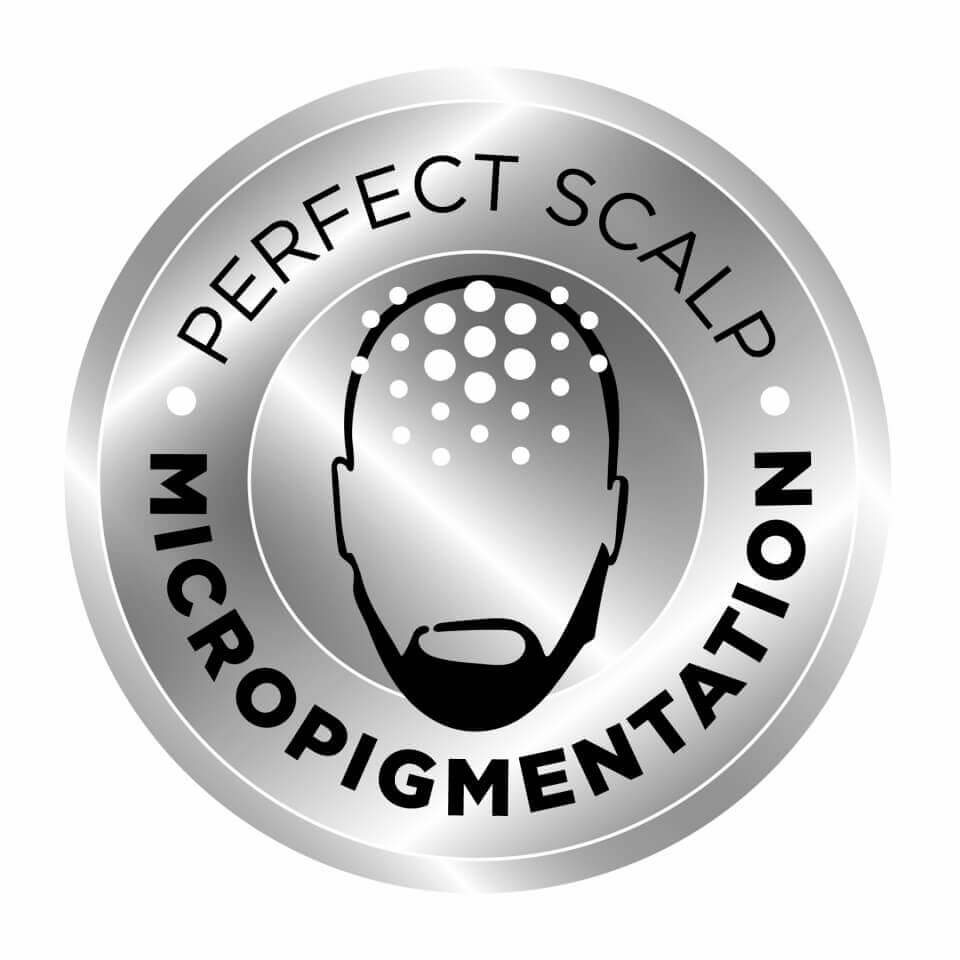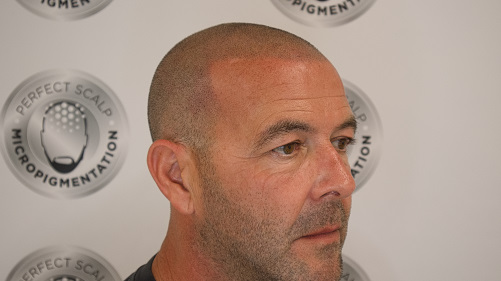Hair Tattoo FAQ: Everything You Need to Know
Hair Tattoo FAQ – In the realm of hair loss solutions, scalp micropigmentation (SMP) has emerged as a cutting-edge technique with life-changing potential.
Often referred to as hair tattooing, this innovative approach is more than just creating the look of a shaven head – it’s a sophisticated process that can restore confidence and offer a long-term solution to individuals dealing with various stages of hair loss.
As people with thinning hair, hair loss sufferers, and balding individuals consider their options, they often have a multitude of questions about scalp micropigmentation.
In this comprehensive guide, we address these queries and more to provide a deep understanding of this transformative procedure.
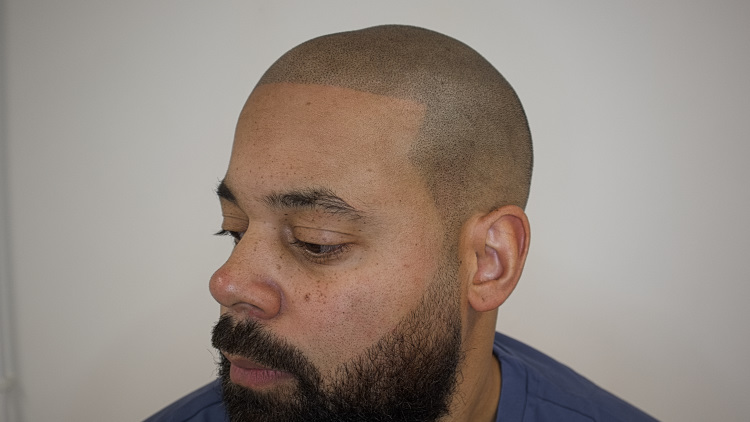
Hair Tattoo FAQ: What is Scalp Micropigmentation?
A Hair Tattoo (SMP) is a non-invasive cosmetic procedure that involves the deposition of pigments onto the scalp with micro-needles. This highly detailed process allows the practitioner to replicate the natural look of hair follicles. The end result is a closely shaven look or a full hairline restoration, depending on the client’s needs.
The pigments are matched to the client’s skin tone and natural hair color, ensuring a seamless and natural appearance.
SMP is ideal for those with thinning hair, receding hairlines, or complete hair loss, as it can create the appearance of a denser and more even scalp.
-
How does scalp micropigmentation work?
- SMP is performed using fine needles that inject pigment into the epidermal layer of the scalp. The process is highly specialized, focusing on angle, depth, and distribution to mimic the natural appearance of hair follicles. Typically, three to four sessions are required to complete the procedure, allowing for a natural look that matches the client’s style and skin tone.
-
Is scalp micropigmentation painful?
- Pain is subjective, but most clients report minimal discomfort during the procedure. Many describe the sensation as less painful than traditional tattooing.
-
How long does scalp micropigmentation last?
- The longevity of scalp micropigmentation varies from person to person. Generally, the treatment can last for several years before requiring a touch-up. Factors such as skin type, sun exposure, and lifestyle can affect the durability of the pigments. Touch-up sessions can be scheduled as needed to maintain the desired look.
-
Can anyone get a hair tattoo?
- Scalp micropigmentation is a versatile treatment suitable for most people, regardless of age, gender, or skin type. It is a viable option for those with any degree of hair loss and can be a complementary procedure for patients considering or having had hair transplants.
-
What is the recovery process like?
- After a scalp micropigmentation session, the scalp will likely be red and sensitive, similar to the aftermath of a sunburn. There may be some minor swelling, but this should subside within a day or two. Over the following days, the pigmented areas will begin to scab and flake, which is a natural part of the healing process. It’s crucial to follow the aftercare instructions provided by the technician to ensure proper healing and optimal results.
-
Are there any hair tattoo side effects or risks?
- Scalp micropigmentation is considered safe when performed by a qualified technician in a hygienic environment. It is important to choose an experienced and reputable clinic for your SMP treatment.
-
How much does a hair tattoo cost?
- The cost of scalp micropigmentation can vary depending on factors like the extent of the treatment, the clinic’s location, and the practitioner’s experience. It’s important to have a consultation to get an accurate estimate. While SMP can be a significant investment, many clients find it to be cost-effective compared to alternatives like hair transplants or ongoing medication.
-
Can scalp micropigmentation be reversed or modified?
- One of the benefits of scalp micropigmentation over traditional hair transplant procedures is that it’s reversible and can be easily modified. If a client wishes to change the hairline shape, density, or pigment color, these adjustments can generally be made in a follow-up session.
-
Does scalp micropigmentation look natural?
- When performed by a skilled practitioner, scalp micropigmentation can achieve incredibly natural-looking results. The strategically placed pigments replicate the appearance of individual hair follicles, seamlessly blending with the client’s remaining hair. Properly matched pigments and a realistic approach to design ensure that the end result is a natural and undetectable appearance.
-
Are hair tattoo touch-ups necessary?
- While the initial sessions aim to provide a full and even treatment, touch-ups may be necessary over time to maintain the desired look. These sessions address any fading and can add density or adjust the shape as needed. Most clients find that annual touch-ups keep their SMP looking fresh and ensure it remains a lasting solution.
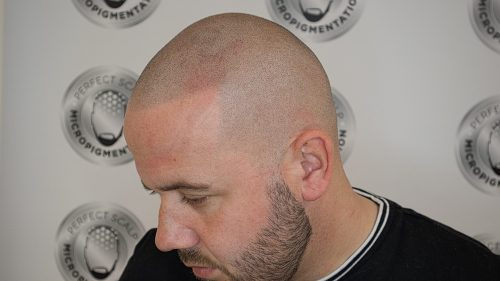
Hair Tattoo FAQ: Benefits of Scalp Micropigmentation
- Improved Confidence and Self-Esteem: Hair loss, especially at a young age, can significantly impact one’s self-esteem. Scalp micropigmentation offers a renewed sense of confidence by providing the appearance of a full head of hair or a more defined hairline. The psychological benefits of feeling comfortable in one’s skin should not be underestimated.
- Low Maintenance Solution for Hair Loss: Compared to hair systems or maintenance-intensive hair treatments, scalp micropigmentation is incredibly low maintenance. Once the treatment is complete, there are no daily rituals, no special products, and no long-term care required. It’s a set-and-forget solution that allows you to focus on living your life.
- Suitable for Various Hair Types and Conditions: Scalp micropigmentation is not limited by hair type or color. It’s a universal treatment that can benefit people with any hair condition, from alopecia to natural balding. Additionally, SMP can cover scars from accidents, hair transplants, or previous surgeries, providing a cosmetic improvement over the affected area.
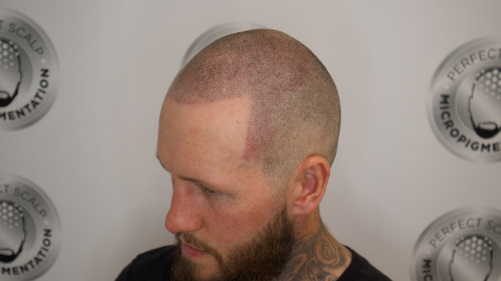
Scalp Micropigmentation vs. Hair Transplant
While surgery is a more invasive and costly solution, many consider hair transplants the gold standard for hair restoration. The procedure involves moving hair-bearing skin from one part of the scalp to another to fill in bald areas. In contrast, scalp micropigmentation does not involve any hair relocation and is a cost-effective, low-maintenance, non-surgical approach to creating the appearance of a full head of hair.
SMP can serve as a standalone procedure or enhance the results of a hair transplant by increasing the visual density of the hair.
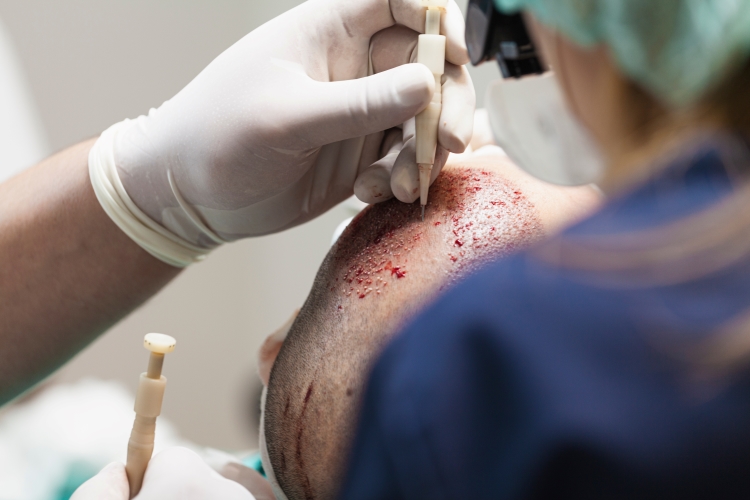
Scalp Micropigmentation vs. Hair System
Hair systems, also known as wigs or hairpieces, are another common method for concealing hair loss. They are made from human or synthetic hair and are attached to the scalp with adhesive or clips. In comparison, scalp micropigmentation is a more permanent and practical solution. A hair system requires regular maintenance, replacement, and can be affected by physical activities.
SMP, on the other hand, is low-maintenance and remains in place, regardless of daily routines or physical exertion.
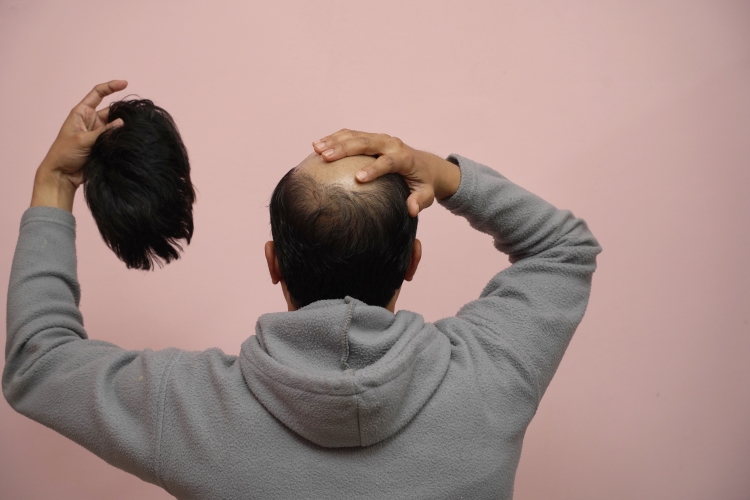
Hair Tattoo FAQ: Why Experience Matters in Scalp Micropigmentation
Artistry is critical in the field of scalp micropigmentation as it’s a blend of science and art. Hairstyle, face shape, and skin tone must be taken into account when designing an SMP treatment. Experience in related areas of micropigmentation, such as eyebrow and lip tattooing, demonstrates a well-rounded understanding of pigment application and skin behavior.
Choosing a technician with extensive experience ensures that the client receives the most natural and flattering treatment possible with a higher degree of safety and satisfaction.
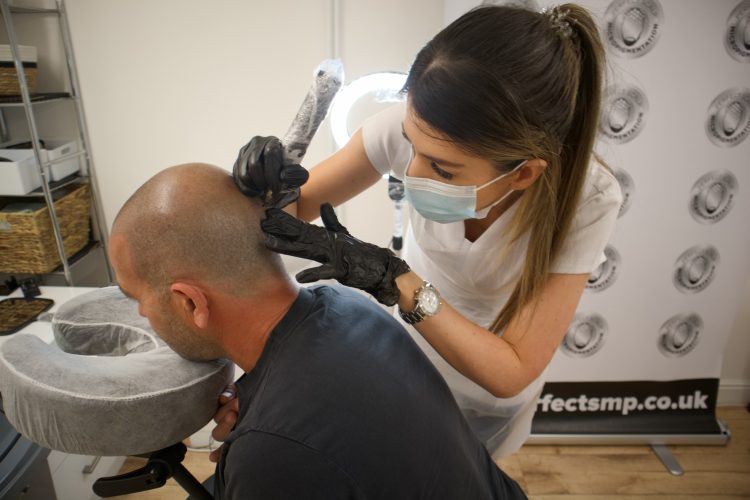
Hair Tattoo FAQ :Conclusion
Scalp micropigmentation is a groundbreaking solution for those looking to address hair loss in a safe, effective, and lasting manner. With its versatility, natural appearance, and low-maintenance care, SMP is becoming the go-to choice for anyone seeking to reclaim their youthful look with confidence.
This Hair Tattoo FAQ post has answered some of the most pressing questions about scalp micropigmentation, and we hope it’s given you the clarity and confidence to consider SMP as a path to restoring your locks. If you’re ready to take the next step in your hair restoration journey, reach out to a reputable scalp micropigmentation clinic for a consultation.
It could be the beginning of a new chapter in your life, one where hair loss is no longer a cause for concern but a challenge successfully dealt with by you taking control.
